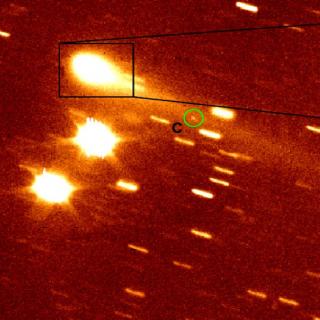Bibcode
Yamada, Manabu; Kouyama, Toru; Yumoto, Koki; Tatsumi, Eri; Takaki, Naofumi; Yokota, Yasuhiro; Morota, Tomokatsu; Sakatani, Naoya; Hayakawa, Masahiko; Matsuoka, Moe; Honda, Rie; Honda, Chikatoshi; Kameda, Shingo; Suzuki, Hidehiko; Cho, Yuichiro; Yoshioka, Kazuo; Ogawa, Kazunori; Shirai, Kei; Sawada, Hirotaka; Sugita, Seiji
Bibliographical reference
Earth, Planets and Space
Advertised on:
12
2023
Citations
7
Refereed citations
7
Description
After delivering its sample capsule to Earth, the Hayabusa2 spacecraft started its extended mission to perform a flyby of asteroid 2001 CC21 in 2026 and rendezvous with asteroid 1998 KY26 in 2031. During the extended mission, the optical navigation camera (ONC) of Hayabusa2 will play an important role in navigation and science observations, but it has suffered from optical deterioration after the spacecraft's surface contact with and sampling of asteroid Ryugu. Furthermore, the sensitivity of the telescopic camera (ONC-T) has continued to decrease for more than a year, posing a serious problem for the extended mission. These are problems that could potentially be encountered by other sample-return missions involving surface contact. In this study, we evaluated the long-term variation of ONC performance over the 6.5 years following the launch in 2014 to predict how it will perform during observations of the two target asteroids in its extended mission (6 and 11 years from the Earth return, respectively). Our results showed several important long-term trends in ONC performance, such as transmission, dark noise level, and hot pixels. During the long cruising period of the extended mission, we plan to observe both zodiacal light and exoplanet transits as additional science targets. The accuracy of these observations is sensitive to background noise level and stray-light contamination, so we conducted new test observations to search for the lowest stray light, which has been found to depend on spacecraft attitude. The results of these analyses and new test observations suggest that the Hayabusa2 ONC will be able to conduct cruising, flyby, and rendezvous observations of asteroids with sufficient accuracy.
Related projects

Small Bodies of the Solar System
This project studies the physical and compositional properties of the so-called minor bodies of the Solar System, that includes asteroids, icy objects, and comets. Of special interest are the trans-neptunian objects (TNOs), including those considered the most distant objects detected so far (Extreme-TNOs or ETNOs); the comets and the comet-asteroid
Julia de
León Cruz